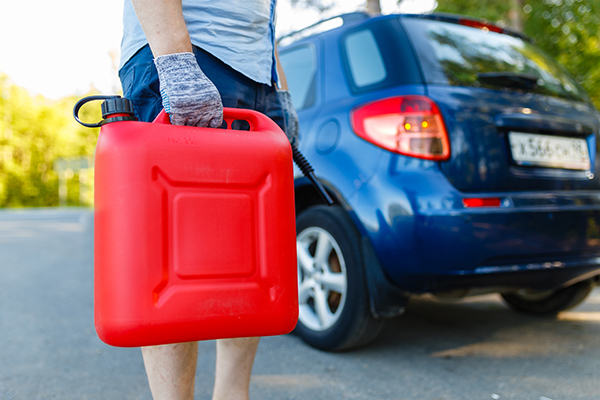Prepping 101: How long will diesel fuel last in your stockpile?
02/15/2020 / By Darnel Fernandez

When it comes to prepping for emergencies, people tend to forget about stocking up on fuel. Disasters can be unpredictable and you might end up bugging out in your vehicle or in need of a generator. Having spare fuel stockpiled somewhere in your house will come in handy. Unfortunately, fuel such as diesel doesn’t really have a long shelf-life. How can you maximize the shelf life of your fuel and store it properly? (h/t to ThePreppingGuide.com)
How long does diesel last?
How to properly store fuel is an essential skill every prepper should learn. Not only can you ensure the longevity of the fuel you store, but you can also save the rest of your preps from literally going out in flames due to improper storage.
Diesel sold nowadays is classified as ultra-low sulfur diesel, meaning it produces much less emissions due to the low sulfur content. Unfortunately, the low sulfur content also means that the fuel won’t last long, especially in unfavorable conditions. When kept at the recommended optimal temperature of between 70 and 85 F, diesel fuel could last for about six to 12 months before degradation kicks in. If kept below 70 F, it may last slightly longer – but the fuel never lasts more than 18 months before it starts to degrade.
To keep your diesel fuel from going bad, you must understand and pinpoint the factors that make it turn bad. While there are many factors at play when it comes to fuel degradation, the more common culprits include water, condensation, heat, microbial activity, and contact with copper or zinc. Even if you’re living in a dry environment, condensation can still happen inside the fuel tank. This causes the fuel to take on a gel consistency and encourages the proliferation of bacteria and fungi.
The presence of biodiesel in the fuel can also influence quality. This increases the fuel’s ability to hold in water, which can lead to microbial issues down the line. You should be proactive in removing water buildup from the tank to make sure microbial presence is reduced to an absolute minimum. (Related: Tips for storing different types of fuel long term.)
Fuel storage and optimization
If you want to store diesel as emergency fuel, you should never store more than what you can use within 12 months. As long as you keep your fuel containers at the optimal temperature, you can use the diesel throughout the entire year, replacing what you have used with new fuel. Rotating your stockpile can help you avoid waste and prevent your fuel from expiring before you even had a chance to make use of it.
As for actual storage containers, diesel storage drums are widely available and come in various sizes. However, these drums do not have drains at the bottom to allow the removal of sediment. To prevent fuel degradation, it is important to also maintain your drums by keeping them in a cool, dry place with consistent temperatures as fluctuations can cause condensation. If water somehow gets on top of the drums, you should remove it as soon as possible to prevent corrosion.
Making your fuel last longer involves the use of biocide and fuel stability treatments. Biocides help kill any bacteria growing in the fuel while fuel stability treatments help prevent breakdown by initiating chemical reactions. However, it isn’t as simple as pouring biocide into a drum of fuel and watching it work its magic. You must recirculate the fuel for about 30 to 60 minutes to ensure that the biocide does its job properly. It also allows it to blend well with the fuel and reach every speck of bacteria inside the tank.
To work around the problems of making your diesel last longer, you should always practice proper storage and maintenance. Learn more about optimal storage strategies at Preparedness.news.
Sources include:
Submit a correction >>
Tagged Under:
bug out, diesel, emergencies, fuel, Gear, off grid, preparedness, prepping, Storage, storage tips, survival, Survival Tips, ultra-low sulfur diesel
This article may contain statements that reflect the opinion of the author
RECENT NEWS & ARTICLES
COPYRIGHT © 2017 PREPAREDNESS NEWS





















